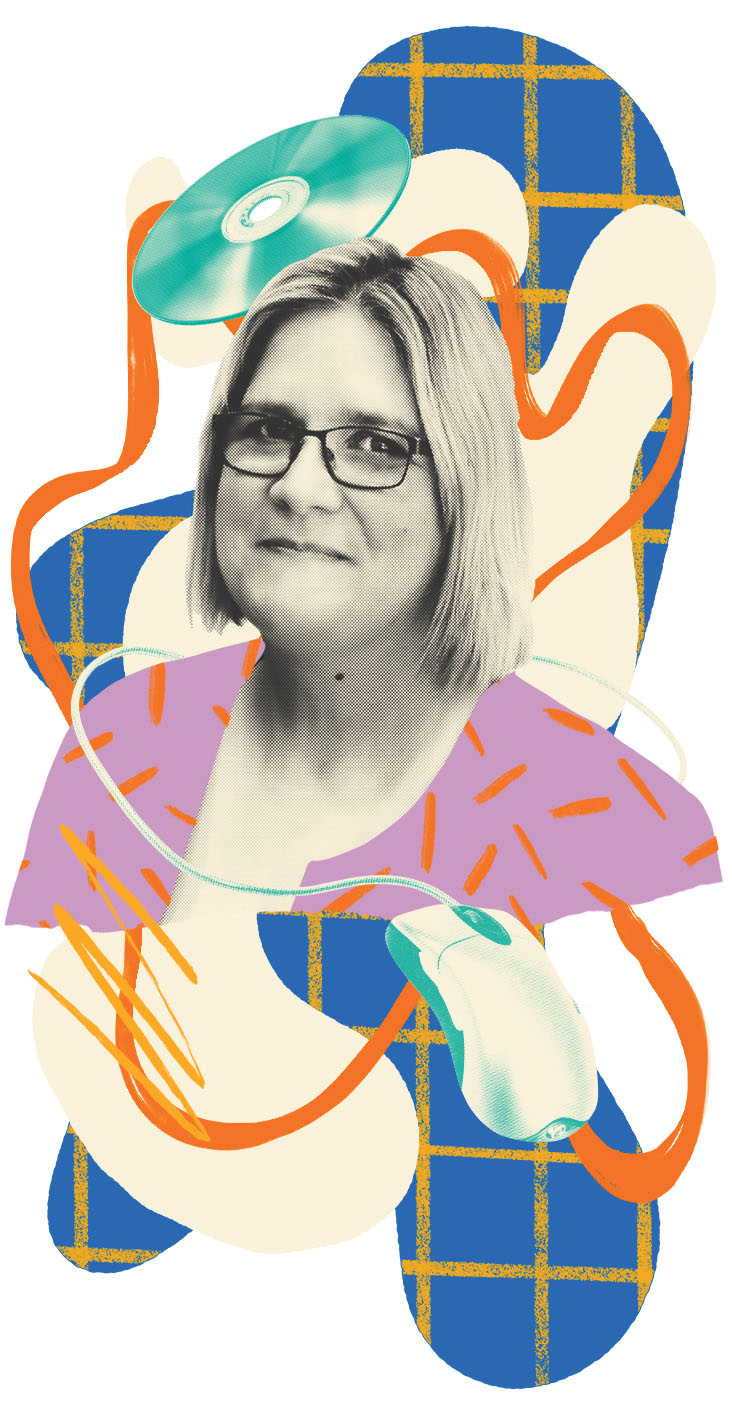Share this page
AddThis Sharing Buttons
From four-years experience to half a century in the classroom, teachers at all stages of their careers share perspectives on their ever-changing profession.
By Stuart Foxman
Illustration: David Weissberg/Closer&Closer
As students get older and have more learning opportunities, their school experiences evolve. It's no different for teachers. What changes and what stays constant during their careers? What's the best advice they've ever given or received? We spoke with six Ontario Certified Teachers about lessons learned and what continues to drive their passion for education.

As the daughter of a teacher, Audrey Beaudoin, OCT, understood the demands of the job. Still, it was a tough transition. "In the first two years, I always felt like I was trying to catch up," she says.
Beaudoin teaches kindergarten at École élémentaire publique Julie-Payette in Kanata, Ont., just outside Ottawa. By now, she has learned a few fundamentals. One, "Relax a bit. If you're trying your best, your students will realize it." Two, "Check in with the audience — what do students need at the time?"
She sees many parallels between the development of students and teachers. Every year, each should see progress and become more confident in their abilities. Beaudoin welcomes insights that teachers share on blogs and social media. While experienced teachers can be great mentors, she says newer members of the profession also have a lot to offer to colleagues.
"We have a beginner's enthusiasm that can be contagious," says Beaudoin. "New teachers can be scared to give new ideas at first, but it's important to just go for it."

Jennifer Connelly, OCT, believes in keeping things fresh. At the Sudbury Catholic District School Board, she has taught middle school and has been an assistive technology teacher. For two years, Connelly served as a student support and inclusion consultant and is now a Special Education consultant. Before becoming a teacher, she was
as an early childhood educator.
"You have to embrace change or you get stale," says Connelly. "Challenge yourself. When you get too comfortable, you aren't learning."
That doesn't necessarily mean you have to switch roles or schools. But keep switching up your assignments and techniques, she says. "Students have more complex needs, so be open to always learning. Never think you've mastered everything."
Connelly sees technology in the classroom as an invaluable tool to accommodate and motivate students. "If you don't embrace that, you'll have an uphill battle," she says.
While Connelly welcomes change, the most satisfying part of the job has stayed consistent. "It's when students who struggle the most [make progress]."

Preconceived notions and snap judgments can interfere with productive teacher-student relationships. Lori Barbato, OCT, learned that quickly during her first contract position. It was at an open custody facility for young offenders, ages 12 to 16. It wasn't quite how she had envisioned teaching.
Barbato made a point of avoiding the students' disposition reports until she got to know them in class. She didn't want the knowledge of their offences or backgrounds to influence her.
"I tried to just get to know the children," she says. "Learn what you can do to help them succeed."
That idea still guides Barbato, who teaches Grade 2/3 at St. Anne Catholic School in Sarnia, Ont. Helping each child reach his or her potential is the key, more so than worrying about benchmark averages. What's different today? Problem-solving and collaboration, which were footnotes earlier in her career, are now at the core of her classroom.
After the summer break, Barbato looks forward to September — returning to the routine of the school week and applying the ideas that were bubbling during the summer. "I'm excited to put all the things I thought of into play. My goal is for every child to say ‘I want to go to school today.'"
"Over the years you recognize the commonality [with your students] of being a fellow traveller. It's important to model for students that we, as teachers and adults, still learn and grow ourselves."

Early in her career, Pamela Parks, OCT, defined success as ensuring the students master curriculum expectations. "When I started, it was all about lesson plans, and imparting knowledge and skills." Over time, she saw what else mattered — recognizing that each child comes to school with their own identity, history, learning style and challenges. "You need to meet students where they're at, and provide the supports to get them where they need to be," she says.
Parks currently teaches Grades 5 and 6 at Meadowlands Public School in the Ottawa suburb of Nepean. Even before entering the profession, she had some idea of what it entailed. As a high schooler, Parks did two years of co-op at an elementary school. "But I didn't expect the drain of being ‘on' all day, or the level of multitasking that happens in a teaching millisecond," she says.
With experience, Parks started to focus less on how her classroom looked, "and more on how children feel in my classroom."
She sees her primary role as building a positive learning community, which she defines as where students feel safe, connected and cared about. "This is the foundation on which all learning takes place," she says.

Bruce Soderholm, OCT, took a detour on the road to becoming a teacher. After being accepted to a faculty of education, he was unsure whether teaching was the best fit. So he worked in sales for an advertising company, and then for a road-marking contractor. While he was doing graduate studies in history, a career-counselling test revealed that he was, in fact, suited to be a classroom teacher.
Thirty years into the profession, he now teaches English at Beamsville District Secondary School in Beamsville, Ont. and has a much keener sense about how learning works three decades later. Back then, there could be pressure to feel you had to do everything well.
"New teachers spend a lot of time thinking about how much depends on them. Over the years, you recognize the commonality of being a fellow traveller. It's important to model for students that, as teachers and adults, we still learn and grow ourselves."
One of the most obvious changes during his career is technology. "We're the digital immigrants and students the digital natives," Soderholm says. What hasn't changed, he adds, is the importance of the teacher-student bond.

Anna Milla, OCT, began teaching in 1969 in Woodstock, Ont. She was only 19 when she took over a class of 10-year-olds for the Waterloo Catholic District School Board. "It was scary," she recalls.
Milla almost quit that first year. The class had 38 students, 27 of them boys. "They were very unsettled," she says. With the behaviour issues, and feeling overwhelmed with the responsibility, she wondered if she'd made the right career choice. But she stuck it out.
Milla retired in 2001, after teaching Grades 3 to 7, as well as Special Education, but ever since has done supply and long-term occasional teaching.
When she started, teachers were taking what she calls a more liberal approach, integrating themes across subjects. "Things were less rigid," she says. While that was progress, she says there was little focus on the individualized needs of students.
Approaches and curriculum directions will come and go, Milla says. The key to success, she says, is classroom management — something she learned her first year. "You can have the best lesson plan in the world, but if you don't have [discipline in your classroom] and things are disorganized, everything falls [apart]."